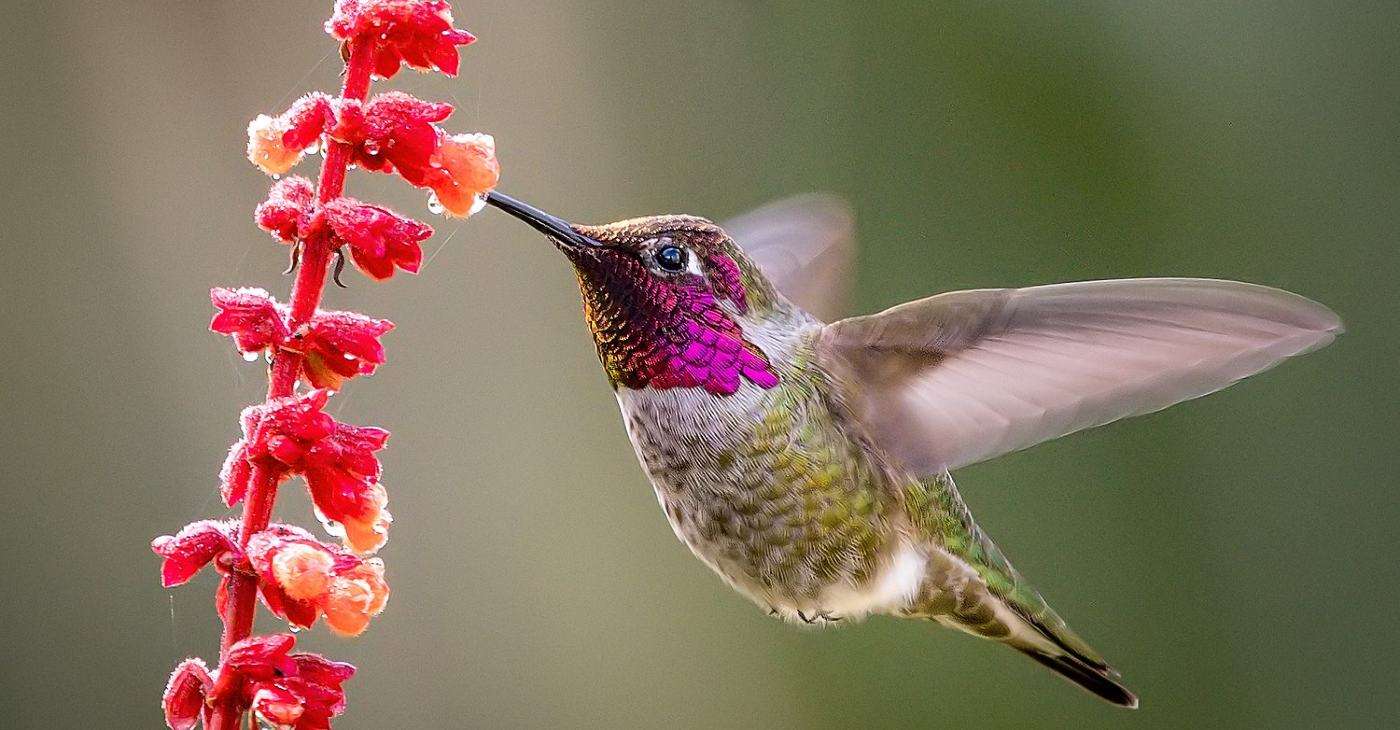Cooking Skills Have Improved So Much in 2020 That 40% Think They're Ready to Compete on MasterChef
Cooking skills have improved among Americans in 2020, as people spend more time at home in the pandemic, says a new survey.

It turns out that hummingbirds, as portentous they seem to be in spring and summer, will sometimes stick around in winter, when many proud owners of a hummingbird feeder stash them away.
While many species are migratory, there are some who stick around all winter—a daunting prospect for the animal with the fastest metabolism in the vertebrate world.
If you are someone who loves hummingbirds, there are things you can do to support them during the lean times until warm weather returns and flowers carpet the ground again.
Hummies are sensitive birds, and concerned birders may have heard a myth and taken it for fact regarding them. For example, the myth that hummingbirds will be lulled by the sugar water in the feeder into not migrating.
This is a myth because it isn't nutrient availability that determines whether or not a hummingbird migrates, but rather an internal clock that tracks the length of the days and the angle of the sun in the sky.
Feeders can be left out; but in the cold of winter it's likely, especially at night, that the water inside will freeze. There are several ways one can prevent this.
Frigid wind will hasten the forming of ice in the sugar water, so positioning your feeder behind a wind break will help. A feeder that suction-cups onto a window will not only bring the hummies closer to view, but the warmth of the glass will transmit into the material of the feeder.
Two other methods for preventing ice formation are to either wrap a string of violet or red non-LED Christmas lights around it or do the same with insulating material such as bubble wrap or aluminum foil. The heat from the bulbs will keep the feeder warm, look pretty at night, and attract hummingbirds thanks to their preference for the red-light spectrum in the case of the former, and the latter will keep the cold air from permeating the reservoir.
Some guides will suggest increasing the normally-precise mixture of hummingbird feed from one part sugar to four parts water, to one part sugar to three parts water. This will indeed have the effect of lowering the temperature at which the mixture turns to ice, but the British Columbia SPCA claim this will make it too unhealthy for the hummies to digest the mixture.
LOOK: See the Moment a Bubble Froze Into a Beautiful Sphere At Sunrise Creating a Natural Snow Globe
Furthermore, the SPCA offers a warning that while a hummingbird will never forsake its migration for your feeder, they may come to rely on it if local winter nectar sources are too scarce. In these circumstances the homeowner that merely wanted to attract these little flying gemstones as an interest will inadvertently become the only food source keeping them alive, and so they suggest only putting a winter feeder out if the house is capable of sustaining a clean and full reservoir of sugar water through the entire season.
There's no reason that with a little effort and some diligence, someone can't have access to that lightning fast chirping and those beautiful scaled colors that typify the smallest of birds, even when snow is falling and most other songbirds are long gone.
LET Good Advice Soar by Sharing This Article…
Be the first to comment